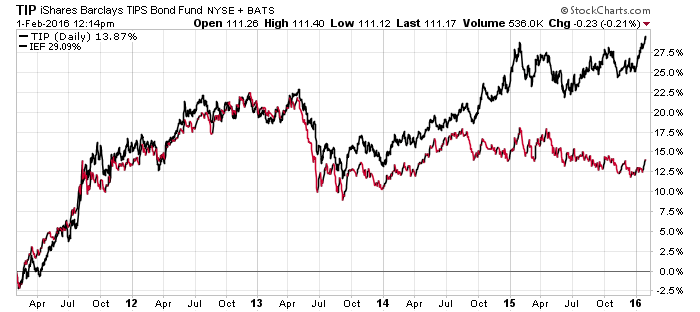Investors have been flocking to the safety of treasury bonds in recent months as volatility in stocks has pressed interest rates markedly lower. In many instances, this has caused traditional treasuries to rally near the top end of their 52-week highs and may indicate a greater risk of rich valuations fighting with waning momentum. Nevertheless, one area of the Treasury market has just started to perk up and may be signaling further strength on the horizon.
Treasury Inflation Protected Securities or TIPS are government bonds whose face value increases with inflation. While most investors confuse this concept with rising interest rates, TIPS are designed to adjust in relationship to the Consumer Price Index as a measure of inflationary forces.
The iShares TIPS ETF (TIP) is a well-known proxy of this niche income asset class. This ETF tracks a basket of 38 TIPS securities and has over $14 billion in total assets. TIP has an effective duration of 7.51 years, which is similar to the interest rate sensitivity of the iShares 7-10 Year Treasury ETF (IEF).
As you can see on the 5-year chart below, these two funds tracked each other fairly closely until the 2013 taper tantrum and subsequent dip lower in interest rates.

Moreover, the October 2014 time-frame marked an important inflection point in CPI that likely impacted the TIPS theme as consumer prices experienced a pronounced contraction.

Since January of last year, we have seen inflationary forces once again trend higher, but very little forward progress in TIP securities. This may represent an interesting value opportunity for income investors looking for dislocations in the market.
TIP recently broke above its 200-day moving average, which is an encouraging technical sign of building momentum. In addition, this ETF is still 8% off of its all-time high set near the 2012 peak.

Continued strength in this index is going to have to be built on several factors:














Leave A Comment